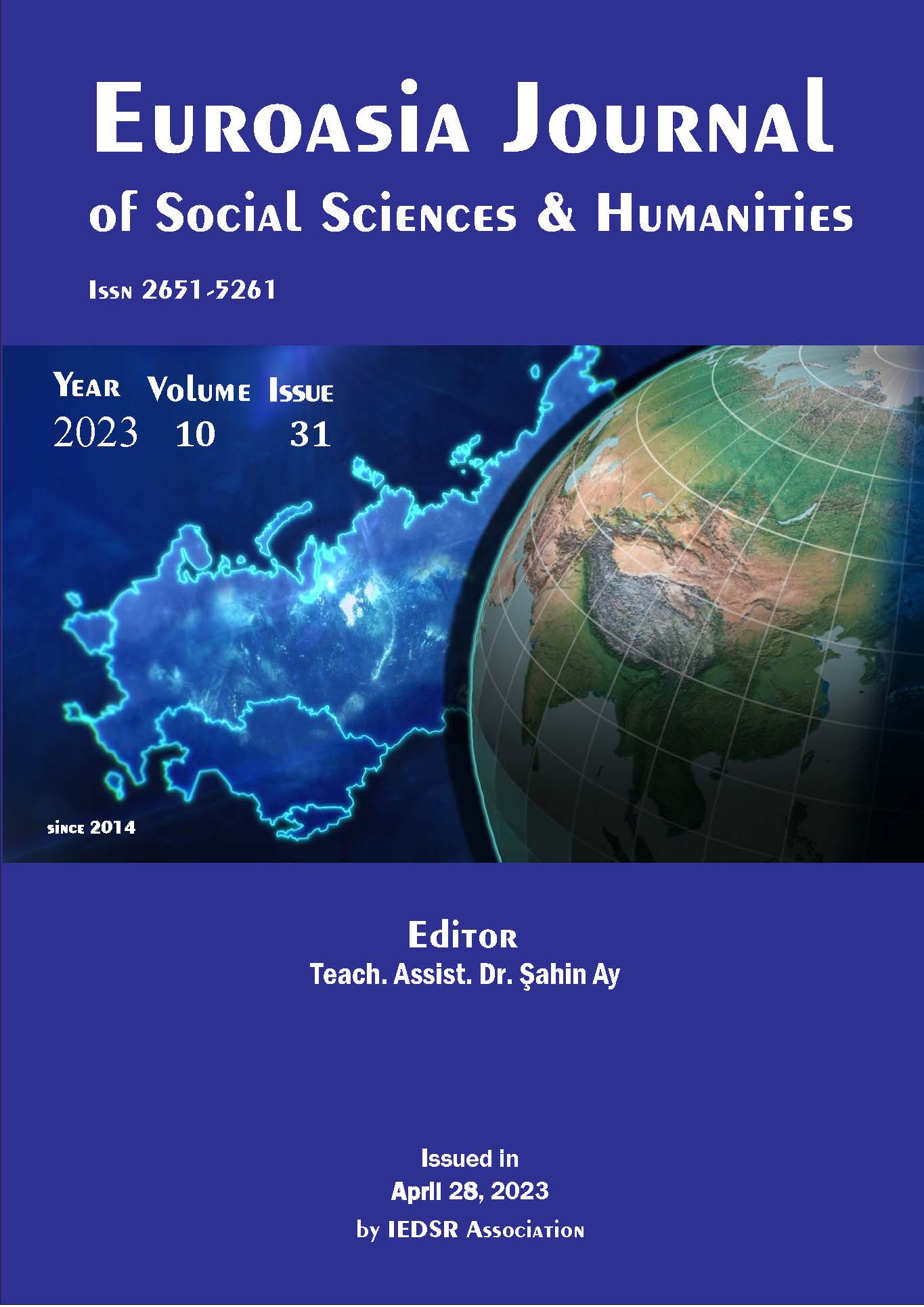Human Figurines in Archaic Period of Cyprus Visual and Cultural Analysis
DOI:
https://doi.org/10.5281/zenodo.7940132Keywords:
Cyprus, figurine, archaicAbstract
The island of Cyprus has attracted the attention of archaeologists, historians, artists and many researchers from different disciplines due to its cultural diversity. The aim of the research is to obtain information about the lifestyle and belief styles of the archaic society in Cyprus by examining the human figurines belonging to the Cyprus archaic period in the Cesnola Collection of the New York Metropolitan Museum. Archaic period figurines of the Metropolitan Museum Cesnola Collection, which constitute the sample of the research, were used from the archaeological data of the Metropolitan Museum, which is the most important data source, and visual analysis was carried out under two separate headings, the human figurines of the Cyprus Archaic 1st and Cyprus Archaic 2nd periods. The method of the research is the qualitative research method and the research is a descriptive study. The figurines included in the sample were examined categorically as a result of visual analysis. In this context, human figurines belonging to the Cyprus Archaic 1st (750 - 600 BC) and Cyprus Archaic 2nd (600 - 475 BC) periods, which are exhibited in the Cesnola Collection in the Metropolitan Museum, have been examined and categorized by visual analysis method. The visual analysis of the figurines is based on archaeological data. In the categorical analysis made by considering the themes, the figurines were divided into seven (7) different categories. Detected categories; worshiping human figurines, instrument playing figurines, warrior figurines, god and goddess figurines, fertility figurines, daily life figurines and figurines that cannot be included in any category. In the research, conclusions were reached regarding the production materials of the figurines. It has been concluded that the figurines reflect the multiculturalism of the island life and the unique culture of Cyprus has formed with the hybridization process. It has been determined that the commercial and political life in Cyprus has effects on Cypriot art. In this context, it has been concluded that there has been a transition from images with Near East and Egyptian influences to Greek images. It is thought that today's culture is the combination of the productions of the past cultures and the productions of the period we live in. Therefore, it has been concluded that strengthening the bond between past cultures and today's culture also increases the value of today's art.
Downloads
References
Cohen, B. (1998). The Nemean Lion’s Skin in Athenian Art. Presses universitaires de Liège.
Counts, D., B. (2014). Myth into Art: Foreign Impulses and Local Responses in Archaic Cypriot Sanctuaries. In Knapp, B., A., & Dommelen V., P. (Eds.),The
Cambridge Prehistory of the Bronze and Iron Age Mediterranean (pp. 285-298). Cambridge University Press.
Gürgen, İ. (2017). “Aphrodite’nin Kökenleri” Recep Yıldırım Anı Kitabı. Bilgin Kültür Sanat Yayınları.
Hartmann, C.(2015). Luigi Palma di Cesnola collection,1861-1950s (bulk, 1861- 1904). The Metropolitan Museum of Art Archives.
Iniesta, I. (2014). On the origin of Ammon’s horn. Neurologia.29(8), 490 - 496.
Kaba, H. (2018). Arkaik dönem Kıbrıs dinini anlamlandırmada pişmiş toprak heykelciklerin rolü. Turkish Studies. 13(24), 119-140.
Karageorgi, S. (2012). The re-creation and transformation of the archaic art of Cyprus (8th-5th c. BCE) to contemporary art [Unpublished doctoral dissertation]. De Montfort University
Karaman, K. (2010). Ritüellerin toplumsal etkileri. SDÜ Fen Edebiyat Fakültesi Sosyal Bilimler Dergisi, (21), 227-236.
Metropolitan Museum (n.d.). The Met Collection. Cesnola Collection. Retrieved March 9, 2020, from https://www.metmuseum.org/art/collection/search?q=Cesnola+Collection&material=Figurines&geolocation=Cyprus&sortBy=Date
Marantidou, P. (2009). The standing draped female figure in the archaic art of Cyprus and Eastern Aegean:a comparative study. (171-188). Proceedings of the
International archaeological symposium held at Pythagoreion, Samos, October 17th18th 2008.Oğuz, E. S. (2011). Toplum bilimlerinde kültür kavramı. Edebiyat Fakültesi Dergisi.28(2), 123-139.
Schmitt, R. (2013). Astarte, mistress of horses, lady of the chariot: the warrior aspect of Astarte. Die Welt des Orients. 213 - 225.
Sugimoto, D., T. (Eds.). (2014). Transformation of a Goddess Ishtar - Astarte – Aphrodite. Academic Press Fribourg.
lachou, V. & Gadolou, A. (2017). Studies in Mediterranean Archaeology in Honour of Nota Kourou.Le Livre Timperman.
Vlachou, V. (2012). Aspects of hunting in early Greece and Cyprus: a reexamination of the ‘comb motif’. In Maria I. (Eds.), Cyprus and the Aegean in the early iron age (pp.345-370). Bank of Cyprus Cultural Foundation.
Yetilmezsoy, B. D. (2006). Tarih öncesi figürinlerin yorumlanmasında düşünsel ve kuramsal yaklaşımlar [Unpublished master thesis]. İstanbul Üniversitesi.
Young, H. J.,& Young, H. S. (1955). Terracotta figurines from Kourion in Cyprus. Philadelphia The University Museum.
Downloads
Published
How to Cite
Issue
Section
License
Copyright (c) 2023 EUROASIA JOURNAL OF SOCIAL SCIENCES & HUMANITIES

This work is licensed under a Creative Commons Attribution-NonCommercial 4.0 International License.

